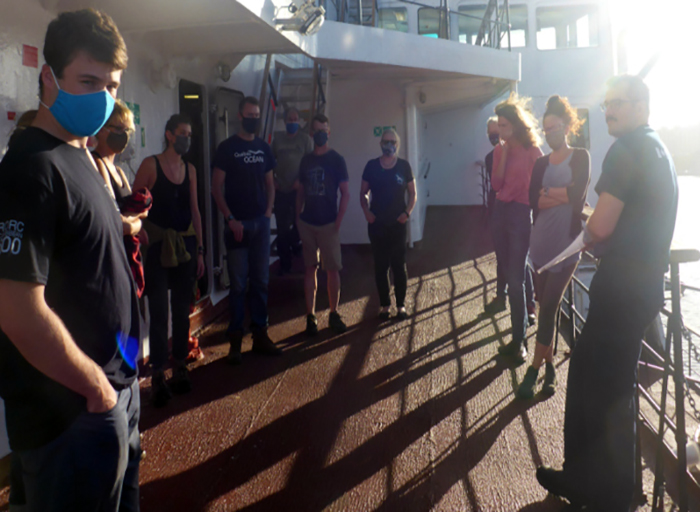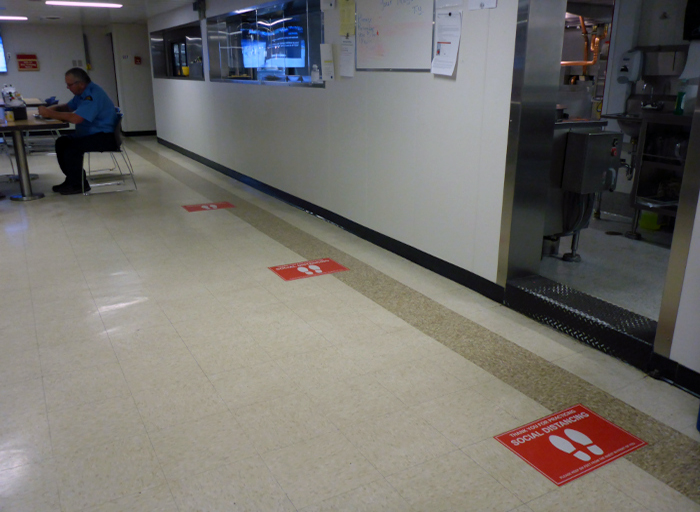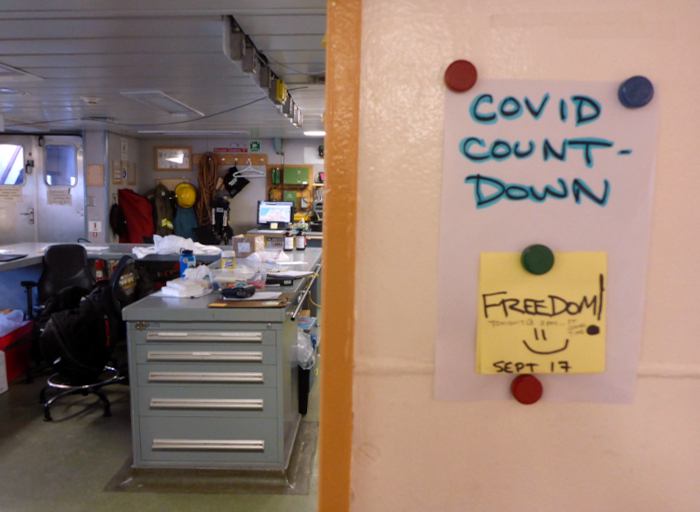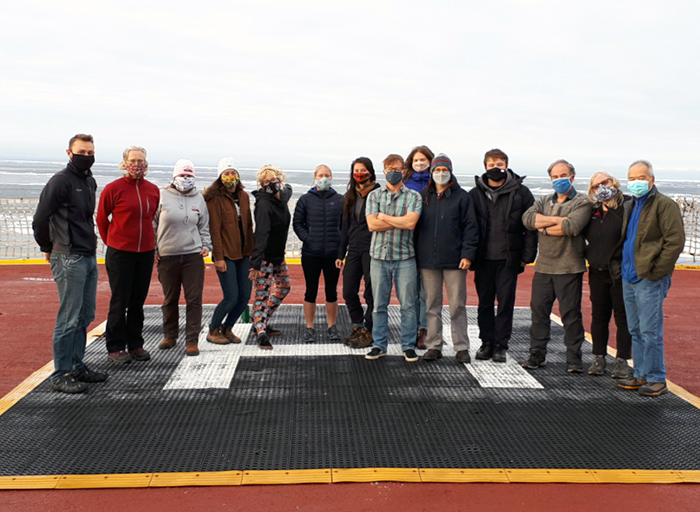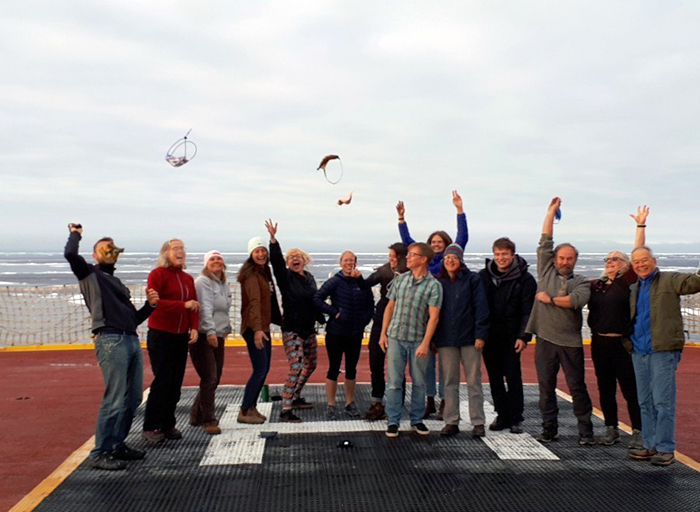Dispatch 12: Science in the Time of Covid-19
Nina Nemcek
September 17, 2020
September 17th. The date we had all been anxiously waiting for marked 14 days since the night we all converged on St. John’s, Newfoundland from our various corners of Canada and boarded the Louis S. St- Laurent under a brilliant full moon. Since two weeks is the quarantine period recommended by health authorities as a maximum incubation period of the Covid-19 virus, on September 17th the countdown was over, we all breathed a sigh of relief and tossed our face masks into the air. We had now essentially become our own self-contained, floating bubble of 72 souls. But let me back up, the story of how we got to this anticipated date starts many months earlier.
When Covid-19 blew up into a global pandemic sometime in mid-March it changed the world as we know it. All of a sudden office workers became teleworkers in their pyjamas, parents became unwilling schoolteachers and a trip to the grocery store was the most dangerous part of one’s day. As much as I personally revelled in the opportunity to work from home, my job as an oceanographer for the department of Fisheries and Oceans Canada (DFO) necessitates the collection of field samples. While oceanography has advanced in recent years with the use of satellites and moored sensors that can relay data in real-time to researchers at their computers, moorings still need to be serviced, and the bulk of oceanographic measurements are still collected by people, on research ships at sea. This essentially means a group of strangers from distant corners of the world are thrown together onto a ship where they work, eat, sleep, and live in very close quarters for weeks to months - basically an ideal breeding ground for a virus. As a result, oceanographic research ground to a screeching halt in March with many research cruises cancelled, postponed or otherwise modified and the fate of the 2020 BGOS/JOIS survey hanging in the balance. Luckily for us, with a lot of extra planning, negotiations, and protocol changes spearheaded by our JOIS coordinator Jane Eert, we are able to get approval for the program to continue in its 18th year with a couple of adjustments.
The first major change was that current border closures meant that our international partners could not join the expedition this year. Most glaringly, this meant the team from WHOI that is responsible for the various moorings that are recovered and deployed each year would not be able to do this work. Thanks to everyone’s new favourite tool ZOOM, the WHOI buoy team trained our DFO scientists over the summer to do some of these deployments on their behalf (stayed tuned for an upcoming dispatch on ITPs). We are thus a much smaller science contingent than usual, with a core group from DFO joined by only our Canadian university partners. The one side benefit of this is that with the physical distancing guidelines sharing of cabins is no longer permitted so everyone has their own private space, a huge luxury on most research vessels!
The second major adaptation to the pandemic was that we had to begin and end the cruise in St. John’s, Newfoundland, instead of in our usual location of Kugluktuk, Nunavut. In order to protect the remote Arctic communities that have thus far avoided an outbreak, flights in and out of the Arctic have been curtailed. Starting in St. John’s has added a full 2 weeks to our research expedition as it is a 7-8 day transit in each direction to get to our study region in the Canada Basin. But it has been a treat for many of us who have not yet had an opportunity to sail through the Labrador Sea and Baffin Bay.
The day after boarding the Louis St-Laurent, all crew and scientists got tested for Covid-19. From that point on we were not allowed to leave the vessel during the 2 days we spent fuelling and loading supplies in St. John’s. For the next two weeks, we kept our distance as much as possible which was relatively easy to do, hunkered down in our cabins with a long transit ahead of us. The typical staples of the pandemic, hand sanitizer and Lysol wipes were everywhere throughout the ship. We wore our masks dutifully and reported to the ship’s medical officer each morning to have our temperature taken. We took advantage of the gorgeous weather in the Labrador Sea to have open-air daily science meetings on the helicopter deck. With no positive test results coming back, and none of the flights we had arrived on flagged as having infected passengers, the end of the 14-day countdown was met with much rejoicing. We are still cautious and practicing good hygiene, but optimistic that we can finish this expedition in good health.

